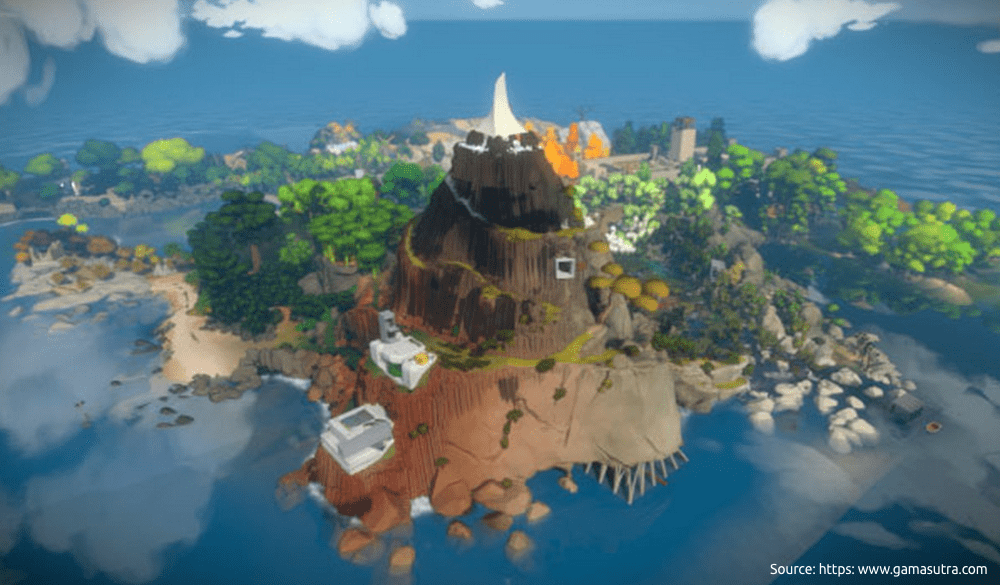Writing for Echo Magazine, Mateuzs Janik outlines how video games as an art form represent a unique opportunity to synthesise expertise from a wide variety of creative disciplines to create novel experiences for an audience.
How architecture fits into gaming
As 3D environments in gaming have emerged to become a staple of the industry, requiring more complex and stylised designs, architects have found a niche ready to welcome them. In fact, RTF lists 8 established architects who have found a new home in video game design.
ArchDaily asked their readers to weigh in on architecture in gaming and found a variety of answers all illustrate how architecture is pivotal in influencing how a game is experienced. Indeed, they emphasise how appealing to as many senses as possible helps minimise the gap between the real world and any virtual world a player is invited to explore.
Drawing on the idea of pathetic fallacy in art, it becomes easy to see how, for example, an empty, derelict urban environment can evoke feelings of lifelessness, mystery, loneliness, and so on. It’s clear from this how architecture can do its part in telling the story a game wants to impart to its players.
What makes up architecture in game design?
There are quite a few considerations that go into the design of virtual environments, including:
- Lighting – an important consideration in classical architecture, but taken to a new level in gaming as lighting can be much less grounded and more dynamic. It can also be limited by the way the game is built, which needs to be factored in environment design.
- Scale – bigger is often considered better in gaming as big studios want to show often huge, ungainly 3D environments. However, realism and nuance in game design are achieved by a more thoughtful and restrained approach to the scale of a virtual world.
- Shape – hard, soft, intricate, minimalist. There are many ways the shapes used in gaming architecture can influence the feel of the experience.
- Texture – as game engines become more sophisticated, increasingly realistic textures can be implemented. Still, games can achieve as much or more with stylised, less graphics-intensive texturing.
- Colour – there was a time when triple-A companies were obsessed with grey and sepia tones, but there are so many ways to incorporate colour to create a unique experience.
- Context – a building within a game environment doesn’t stand alone. It sits against a drop of ground and sky, maybe a sprawling cityscape or expansive wilderness. What is being built needs to be considered in the wider environment it’s going to sit in.
- Sound – you might expect acoustic considerations to be limited to building a theatre in real life, but since all gaming environments function as a stage for the player to act out the game’s story, sound is a crucial component of this kind of architecture.
- Function – the most exquisitely crafted environment will still fall short if it doesn’t take into account the game that needs to take place within it. But equally, an environment that is created just to fit around gameplay may not bring the same quality to a game as one that is allowed to meet function with form.
While there’s plenty to consider and lots of potential in video game architecture, there are also some pitfalls that developers have trouble avoiding. These can include:
- Using architecture as a kind of ego trip or to show off technical functionality
- Passing off important architectural decisions to team members not qualified to make them
- Focusing on product, not process, and failing to iterate and encompassing meaningful design
Where to start exploring video game architecture
Curbed gives a great list of 18 games worth playing if you want to get a feel for architecture and game design. Some allow the player to dabble in building design and city planning, while others demonstrate the impact video game architecture can have.
For a hands-on approach, we’ve got a good starting point. At SpaceDraft, we also see the need for holistic tools in game design, which is why we created one that allows you to combine all the facets of game architecture in a way that’s affordable and accessible. This way you can easily plan and prototype your multidimensional game architecture before you break the bank building it.
Sources: https://archvirtual.com/2013/02/09/the-importance-of-architecture-in-video-games-and-virtual-worlds/
